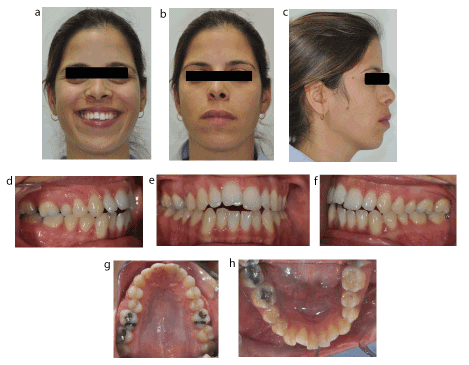Contents
What is ankylosis
Ankylosis is a fairly common disease in which, due to pathological changes inside the joint, it first loses its mobility, and then completely becomes immobile. Ankylosis can develop in any joint – most often large and medium joints of the extremities are affected, and ankylosis of the vertebral joints in Bechterew’s disease is also common.
– Ankylosis comes from the Greek word “ankilosis”, which means “fixed, bent.” Ankylosis is the absence of any active and passive movements in the joint, that is, its immobility. Ankylosis of the joint is formed as a result of the formation of bone, cartilage or fibrous fusion of the articular ends of the articulating bones and is one of the most unfavorable outcomes of traumatic injuries and diseases of the joints. Ankylosis can occur at any age, with a peak incidence in middle age, explains Orthopedist Ayaz Faizullin, a traumatologist.
There are three types of ankylosis: fibrous, bone and cartilaginous. In fibrous ankylosis, the bones are connected by fibrous tissue to the remnants of cartilage or synovium. Such a pathology often occurs during prolonged immobilization (forced immobility, for example, when plaster is applied for a long time), while a small joint mobility still remains. Bone ankylosis, as a rule, occurs against the background of purulent arthritis or intra-articular fractures, and the joint becomes completely immobile. Cartilaginous ankylosis can form with arthrogryposis in young children – a congenital pathology of the skeleton with contractures and deformities of the limbs.
Causes of ankylosis in adults
The main causes of ankylosis in adults are: infectious arthritis (nonspecific and specific – for example, occurring against the background of tuberculosis), rheumatic diseases that form scar bridges in the joint, osteoarthritis, joint injuries and prolonged forced immobilization (immobility).
– Pathology is formed as a result of fusion of articular surfaces during inflammation, tissue repair after damage or prolonged lack of movement. Ankylosis can occur on the background of infectious arthritis, purulent arthritis, arthritis on the background of tuberculosis. The second reason is rheumatic diseases, in which chronic inflammation occurs, leading to cicatricial bridges and further to ankylosis. The third reason is osteoarthritis, in which cartilage tissue degenerates, subsequently leading to a decrease in the range of motion in the joint and to its immobility. The fourth cause of ankylosis is injuries: intra-articular fractures, fractures-dislocations against the background of incomplete reposition of fragments, infected wounds with open fractures. The fifth reason is long-term immobilization – for example, the imposition of plaster for a long time. At the same time, soft tissues are scarred, fibrous contracture is formed, and then ankylosis, – says orthopedist orthopedist Ayaz Faizullin.
Symptoms of ankylosis in adults
The main complaint of patients with ankylosis is joint immobility. At the same time, much depends on the position in which the joint is fixed – for example, with ankylosis of the joints of the lower extremities, if the leg is in a bent or half-bent state, it will be very difficult for a person to walk, the gait changes. With ankylosis of the joints of the spine, the posture changes, with ankylosis of the temporomandibular joint, the patient is painful and uncomfortable to chew and talk. Also, there is a deformation of the joint – it can thicken, be of an irregular asymmetric shape. In addition, with fibrous ankylosis, the patient experiences pain when walking and physical exertion. With bone ankylosis, there is no pain in the joint.
Doctors also note that ankylosis can develop gradually. At first, the patient notes stiffness and pain in the joint in the morning. Gradually, the pain goes away, and the joint is deformed.
Treatment of ankylosis in adults
Ankylosis in adults is treated by an orthopedic traumatologist or rheumatologist. Treatment should be started as early as possible to avoid serious consequences, especially since modern methods of treatment can restore a person’s ability to painless movement and the ability to lead a full life.
Diagnostics
Diagnosis of ankylosis begins with a consultation with an orthopedist, rheumatologist or surgeon. First, the doctor listens to the patient’s complaints, collects an anamnesis of the disease, clarifies whether there were any inflammatory diseases of the joints or injuries. After that, the specialist proceeds to the examination – notes how mobile the joint is, whether there is a pain symptom. To finally confirm the diagnosis, the doctor may prescribe an X-ray, CT scan or MRI of the affected joint.
Modern treatments
– Treatment of ankylosis in adults can be conservative and surgical. Conservative treatment is usually auxiliary – aimed at reducing pain, eliminating the causative factor. Conservative methods include mud therapy, electrophoresis, massage, spa treatment.
The goal of surgical treatment is to restore the range of motion in the joint or to introduce the limb into a functionally advantageous position (the position in which the patient is as comfortable as possible to move or self-service). Types of surgical treatment of ankylosis – resection of adhesions, arthrodesis (surgery to immobilize the joint), arthroplasty (plastic surgery to recreate the correct shape and correspondence of the articular surfaces) and endoprosthetics (complete replacement) of the joint, explains orthopedist orthopedist Ayaz Faizullin.
Prevention of ankylosis in adults at home
To keep the joints healthy and avoid the development of ankylosis, preventive measures should be taken:
- timely treat inflammatory diseases of the joints;
- avoid injury;
- regular exercise;
- after injuries, engage in therapeutic exercises and physiotherapy, which will help the damaged joint develop, increase muscle tone;
- preventive massage;
- in case of discomfort and pain in the joints, immediately seek medical advice.










